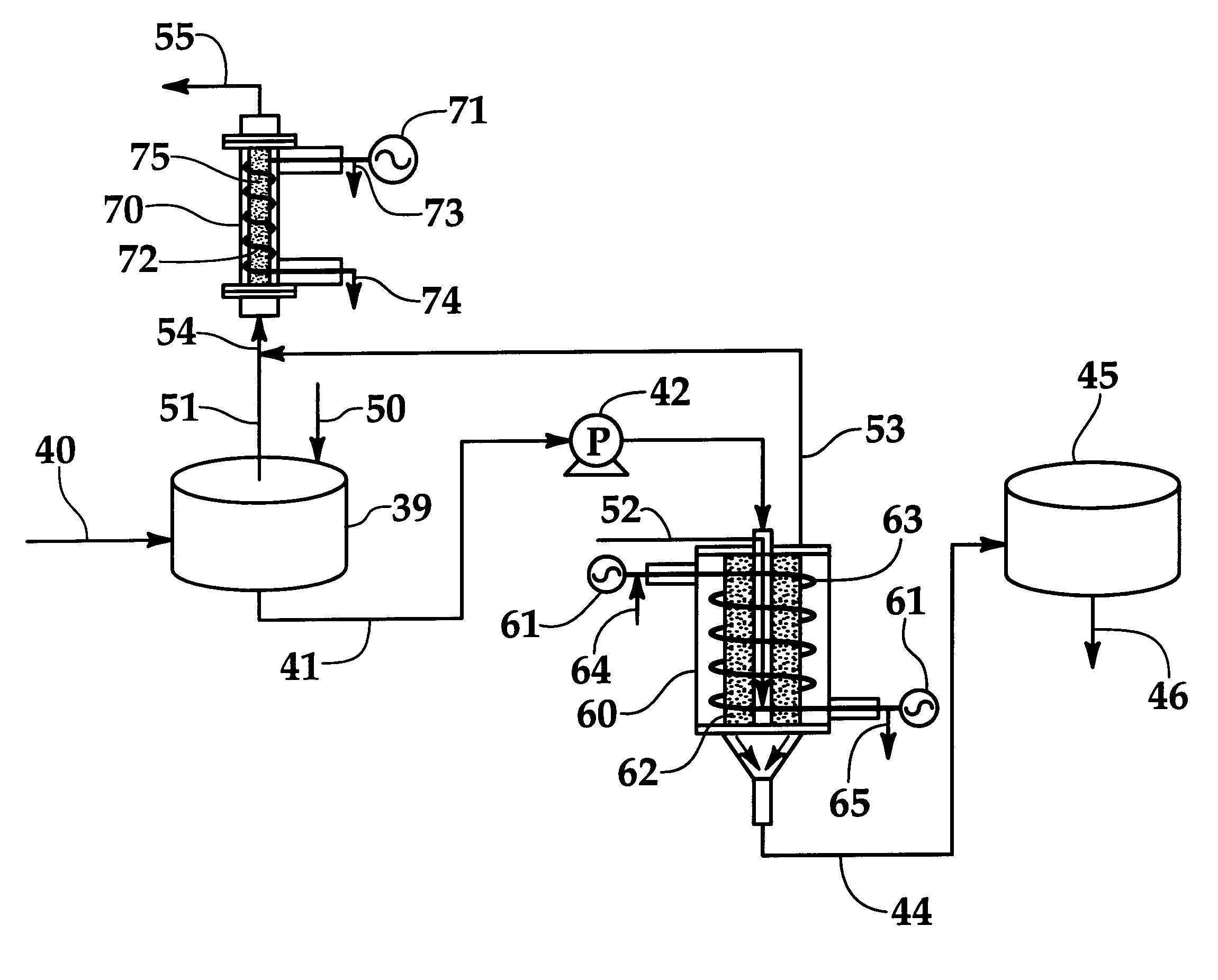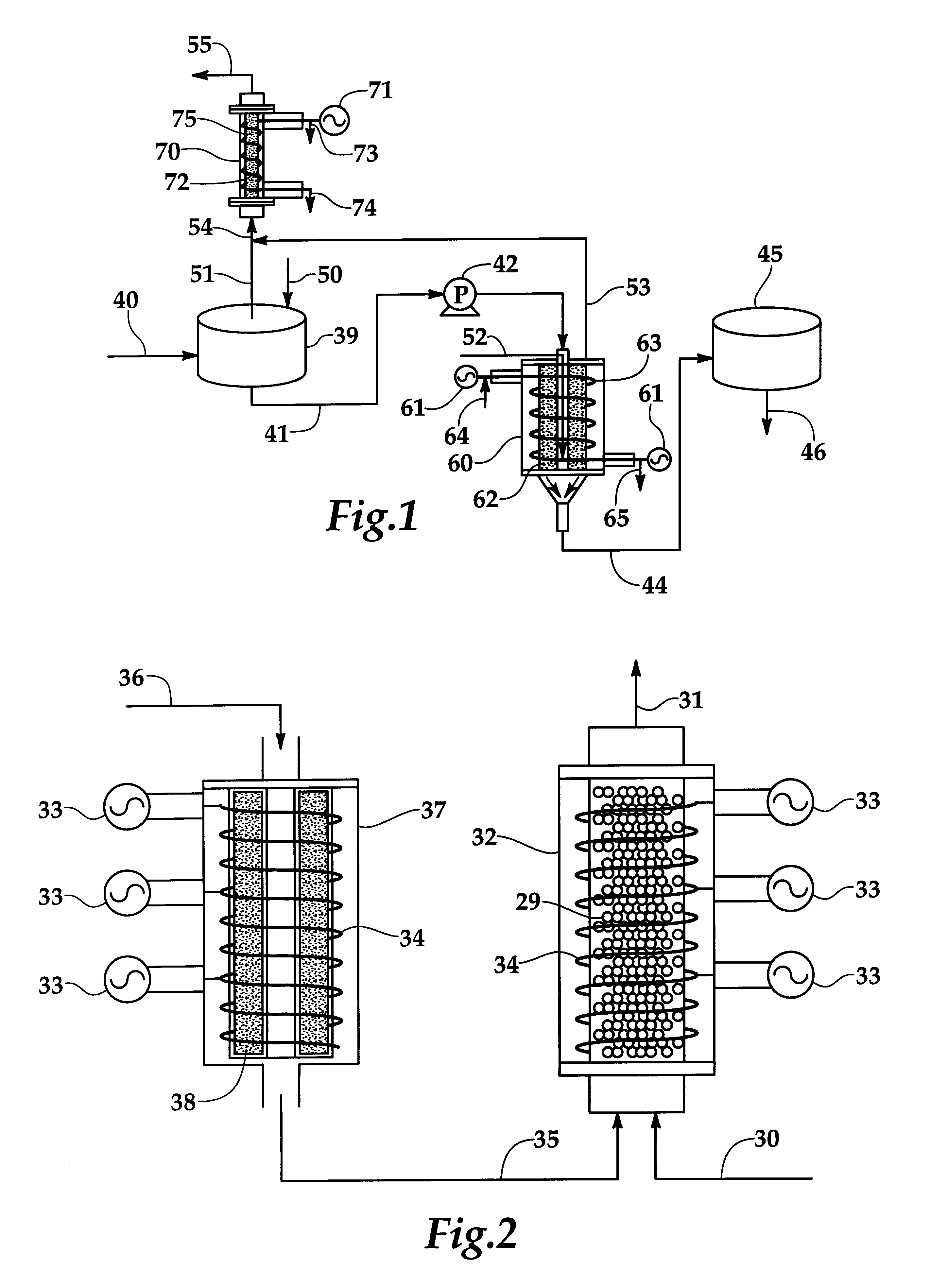Process for microwave decomposition of hazardous matter
- Summary
- Abstract
- Description
- Claims
- Application Information
AI Technical Summary
Benefits of technology
Problems solved by technology
Method used
Image
Examples
example 1
An experimental setup similar to that shown as the first stage of FIG. 2 was employed to determine the efficiency of the oxidation of UDMH by microwave decomposition. The tests utilized approximately 1.3% UDMH in a helium carrier gas passing through an 0.5 inch diameter quartz bed packed with 12-inches of char within a microwave cavity. A gas chromatograph was employed to measure the off-gas concentration of methane and nitrogen. As shown in Table 1, the tests proved that the proposed system can substantially decompose or destroy UDMH and using a microwave input power of 700 W or more produced 100% destruction efficiency.
example 2
Additional tests using the experimental setup of Example 1 were obtained to determine the effect of the gas hourly space velocity through this experimental reactor. Using 800 W microwave power it was determined that if the gas hourly space velocity is less than 2500 / hr, complete decomposition of the UDMH occurred. Above this value some higher molecular weight intermediate decomposition products occurred; however, as long as these were gaseous or capable of easy volitization, the oxidation stage of the multipurpose microwave reactor can handle their further complete oxidation.
example 3
Additional tests using the experimental setup of Example 1 were obtained to determine the destruction efficiency in the vapor phase of only hydrazine. The inlet hydrazine vapor concentration was 1.95%, and only the nitrogen content of the largely helium off-gas was measured with the gas chromatograph since no methane was produced. The result was that even at the low microwave power of 100 W, the destruction efficiency was 99.97%, and any larger power level gave complete destruction.
PUM
| Property | Measurement | Unit |
|---|---|---|
| Temperature | aaaaa | aaaaa |
| Pressure | aaaaa | aaaaa |
| Frequency | aaaaa | aaaaa |
Abstract
Description
Claims
Application Information
 Login to View More
Login to View More - R&D
- Intellectual Property
- Life Sciences
- Materials
- Tech Scout
- Unparalleled Data Quality
- Higher Quality Content
- 60% Fewer Hallucinations
Browse by: Latest US Patents, China's latest patents, Technical Efficacy Thesaurus, Application Domain, Technology Topic, Popular Technical Reports.
© 2025 PatSnap. All rights reserved.Legal|Privacy policy|Modern Slavery Act Transparency Statement|Sitemap|About US| Contact US: help@patsnap.com


